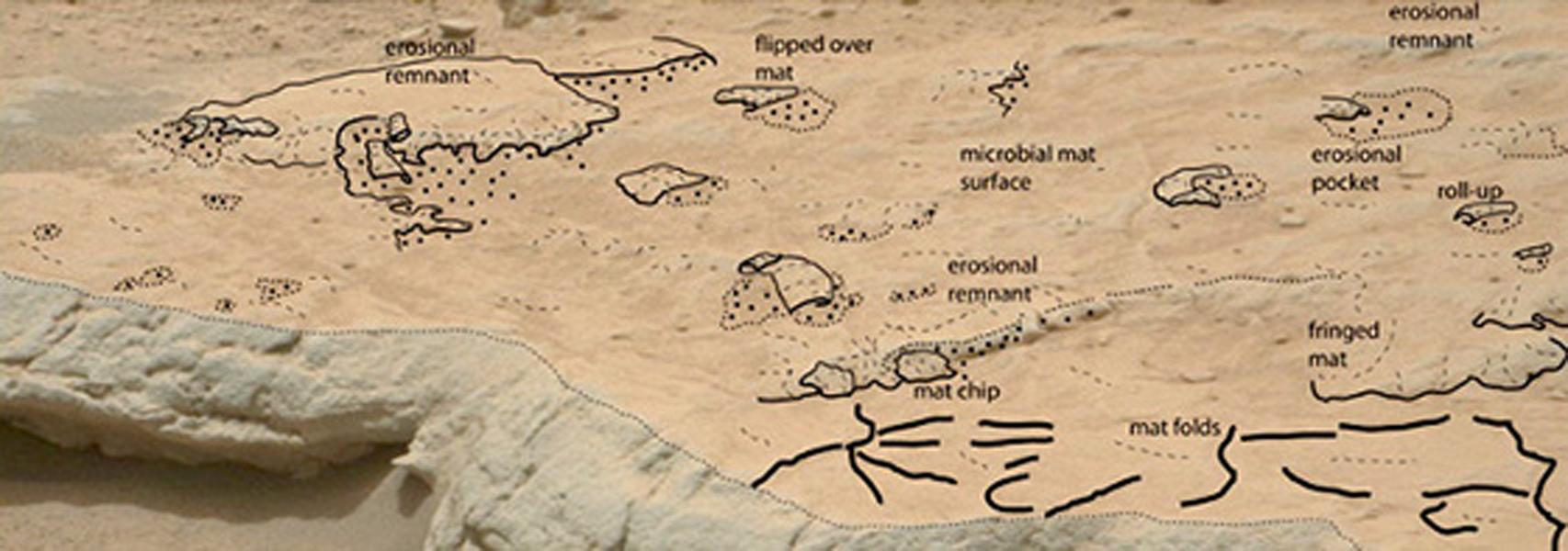
Is it biology or geology?
Nora Noffke, a professor at Old Dominion University in Norfolk, Virginia, has analyzed features photographed by the Curiosity rover that are strikingly similar to landforms produced by sheets of bacteria on Earth. The sheets, known as microbial mats, leave behind folded and rolled up fragments that look like ruined shards of a rubber sheet when they dry up. On Earth, these remnants can become telltale clues of once-extant life.
Noffke sees similar morphology in some of the photos made in Gale Crater by Curiosity, where the rover is currently on the hunt for evidence that this area of the Red Planet might once have been hospitable for life.
While Noffke says that these features, which are more than 3 billion years old, are not proof of martian life, they are sufficiently compelling to merit further study.
The need for additional lines of evidence before claiming that life once existed on Mars is underscored by Rosalba Bonaccorsi, a research scientist at the SETI Institute. “We have been studying sedimentary structures that are formed by bacterial films here on Earth, and they bear an amazing resemblance to some features on Mars found by the Curiosity rover in Gale Crater,” she says.
“But morphological similarities can’t be taken as unequivocal evidence of life. For that, we would also need to identify associated biomineral or organic compounds that are known to be of biological origin. After all, extraordinary claims require extraordinary evidence.”
The SETI Institute has multiple research endeavors designed to further define and refine our knowledge of biosignatures – chemical and morphological indicators of life that might be found on other worlds. These research efforts include field work in the Andes and the nearby Atacama Desert, in Death Valley National Park, and various polar and subpolar environments.
Noffke’s paper has been published in the journal Astrobiology.





